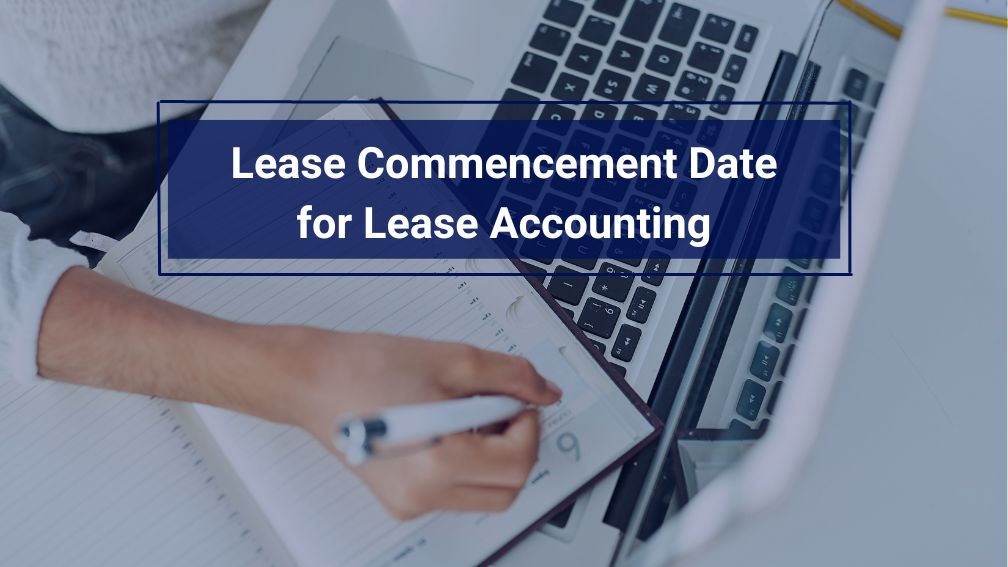Lease Commencement Date: For Lease Accounting
Last Updated on June 2, 2023 by Morgan Beard
When it comes to leasing, there are many terms used to define specific aspects of a lease and multiple important lease dates, like lease expiration date, effective date, rent abatement periods, which can be confusing. One term that often causes confusion is the Commencement Date. This is especially true since the Commencement Date is typically defined in the lease, yet that date is often different from ASC 842’s definition of Lease Commencement Date.
What is a Lease Commencement Date?
Under ASC 842, a lease commencement date is the date when an underlying asset is available for use by the lessee. It’s a critical date that marks the beginning of the period of time during which a lessee is entitled to exercise the right to use a leased asset. In other words, it is the occupancy date of the commercial space.
For a real estate lease, the lease commencement date could be the date on which the lessee takes possession of the property to make tenant improvements to the space. If a lessee is granted early occupancy to a space, it would be this date.
For a vehicle lease, the lease commencement date could be the date on which the keys are provided to the lessee to use the car. This may be considered the lease start date.
This is not to be confused with the rent commencement date.
Why is the Commencement Date Important?
Since the underlying asset is available for use by the lessee at the time of the lease commencement date, it is also the date that lease accounting must start, regardless of the date that the lease was signed. Therefore, this is important because it is the date the amortization schedules are made and the right of use asset and lease liabilities are recorded on the balance sheet.
Due to the significance, it is suggested that the accounting team is closely aligned with all departments especially commercial real estate operations teams who manage leases to ensure they know when exactly they were granted access to a leased asset.
Leasing Date Dates Defined:
Lease Administrators are all too aware of the importance of critical dates. For lease accountants, the lease commencement date is king. Here are other common critical dates found within a lease agreement:
- Lease Inception Date: The date of the creation of the lease agreement OR the date of the commitment by both parties for principal provisions of lease. The inception date is whichever of these two dates is earlier.
- Rent Commencement Date: This is when the tenant is obligated to start paying rent.
- Lease Start Date: The lease “starts” on the date possession is passed from the landlord to the tenant on paper.
- Lease Move-In Date: The date in which the tenant takes physical possession of the leased premises.
- Early Occupancy: When the tenant is granted access to the leased premises prior to the lease start date.
- Lease Execution Date: The date any lease is executed between tenant and landlord.
- Lease Expiration Date: The exact date on which the lease contract is set to terminate.
It is the tenant’s obligation and responsibility to know these specified dates because there are informed decisions to be made regarding commercial space in regard to these dates. For example renewal options usually have a certain window of time, typically six to 12 months prior to the expiration of the lease for the tenant to take action on executing a renewal or termination.
Lease Accounting Software and Lease Commencement Dates
The GAAP implementation guidance of ASC 842 defines the lease commencement date as follows, “a lessee will recognize a lease liability, which represents the lessee’s obligation to make lease payments to the lessor, and a ROU asset, which represents the lessee’s right to use the underlying asset during the lease term.”
And, IFRS 16 states that the lease commencement date is “the date on which a lessor makes an underlying asset available for use by a lessee.”
The lease commencement date reigns when it comes to lease accounting. In essence, this date kickstarts the lease accounting process. When the lease commencement date is established, then the finance team will recognize the right of use asset and lease liability on the balance sheet for both their finance leases and operating leases. Read here to learn How to Perform the Lease Classification Test.
Once the lease is recognized, then the right of use (ROU) asset is amortized on a monthly straight-line basis. And the lease liability will decrease as each lease payment is made. Your lease calculations, journal entries, amortization schedules, and financial statements will all be grossly inaccurate if your team has the lease commencement date wrong. This mishap is adjacent to making one wrong move in a game of chess.
Lease accounting software can help both the lessor and lessee parties keep track of these dates and parameters with features such as a dashboard view of all active lease contracts and details, automatic lease standard compliance checks, and the ability for both CPA firms and clients to go into a lease and check details for correctness. By using lease accounting software, lessors and lessees can avoid confusion and ensure they are in compliance with lease accounting standards.
